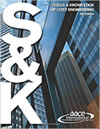All Articles
Accounting
Insurance
Aerosols - Aerosol Products
Intellectual Property
Alcohol, Tobacco & Other Drugs
Internet Marketing
Anger Management & Related Issues
Land Mapping - Surveying - Zoning
Appraisal & Valuation
Laws & Procedures
Aquatics Safety
Life Expectancy - Life Care Planning
Archaeology - Archeology
Linguistics
Artificial Intelligence (AI) / Machine Learning (ML)
Logistics - Reverse Logistics
Bacteria - Fungus - Mold Investigation
Machinery
Banking
Marine - Maritime
Branding - Brand Management
Meditation
Construction
Metallurgy
Cosmetology: Hair / Makeup
Mining
Damages
Orthotics and Prosthetics
Design
Physician Assistants
Digital / Crypto Currency
Pools and Spas (Recreational)
Digital Forensics
Premises Liability
Discovery & Electronic Discovery
Psychology
Dram Shop Liability
Recreation & Sports
Environment
Search Engine Optimization (SEO)
Foot / Ankle Surgery
Securities
Forgery & Fraud
Sexual Abuse - Molestation - Harassment
Gems & Jewelry
Speech-Language Pathology
Human Factors
Telecommunication
Industrial Hygiene and Safety
Toxicogenomics
More...

HEALTHCARE-FACILITIES-HOSPITALS-PAGE ARTICLES MAIN PAGE
. Contact Us if you are interested in having your work published on our website and linked to your Profile(s).
All Articles
Addiction Issues & Substance Abuse
Forensics
Alcohol, Tobacco & Other Drugs
Healthcare Facilities - Hospitals
Alternative Dispute Resolution (ADR)
Insurance Coverage Analysis
Anger Management & Related Issues
Internet Marketing
Animals
Jails - Prisons - Correctional Facilities
Artificial Intelligence (AI) / Machine Learning (ML)
Law Enforcement
Attorney Fees
Manufacturing
Banking
Marine - Maritime
Branding - Brand Management
Mediation
Child Witch Phenomenon
Medical - Medicine
Computer Forensics
Medical Records Review
Counseling
Metallurgy
Criminology
Nonprofit Organizations
Dental - Dentistry
Pharmaceuticals
Digital Forensics
Physician Assistants
DNA (Deoxyribonucleic Acid)
Product Liability
Economics
Real Estate
Elevators - Escalator - Automatic Doors
Security
Engineering
Sexual Abuse - Molestation - Harassment
Environment
Speech-Language Pathology
Exercise & Fitness
Spirituality
Expert Witnessing
Taxation
Finance
Toxicogenomics
Fires & Explosions
Transportation
Forensic Psychiatry
Workplace Violence
More...
Featured Articles
There are no active articles here at this time. Please use the search bar, try another category, or contact us if you would like to contribute an article.
This Article is unavailable. Contact Us
Search articles by title, description, author etc.
Sort Featured Articles
Featured resources
42 Rules for Sourcing and...
by Rosemary Coates
Parental Guidelines for Students...
by Ray Turner, EdD
Skills & Knowledge of Cost...
by Makarand Hastak, PhD, PE, CCP
Follow us










